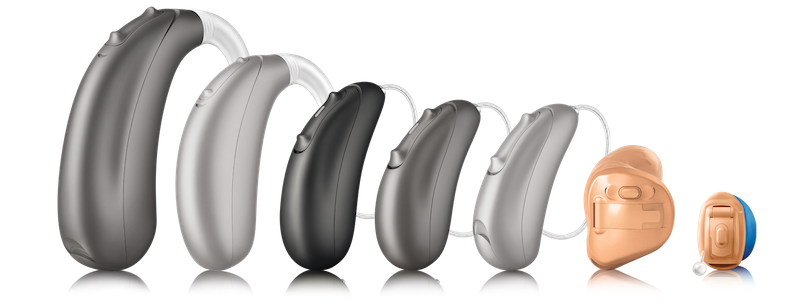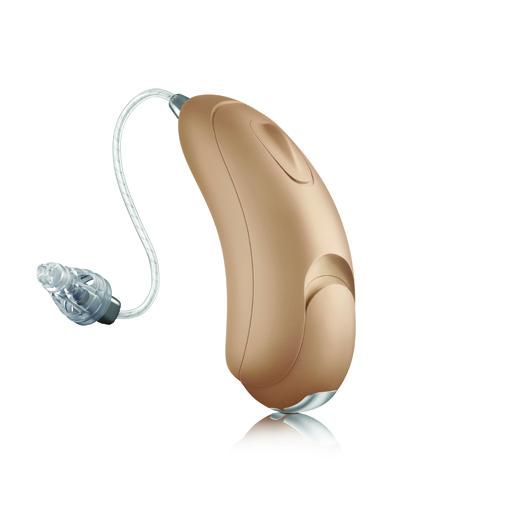Hearing Aids Overview
Hearing aids are technological wonders that are equipped with a wide range of features. These devices are capable of receiving, amplifying, and processing sound as well as speech.
As one of the most common and effective treatments for hearing loss, they play a critical role in improving an individual's ability to perceive sound. Through the exponentially fast pace of technological improvements, hearing aids are more advanced than ever before.
With the sheer number of styles, sizes, and variations of hearing aids available, they can fit almost anyone's lifestyle requirements. Although selecting a hearing aid today can be daunting with so many possible options, our experts can assist you in picking the hearing aid that best suits your needs.


How Hearing Aids Work
In this day and age, hearing aids offer a wide range of advanced technological features. However, there are mainly two different styles or variations that differ in how they are worn:
In addition to the three major components that constitute hearing aids, they all have a power source as well. Their power source is always a battery that is either disposable or rechargeable.
Hearing Aid Styles
In this day and age, hearing aids offer a wide range of advanced technological features. However, there are mainly two different styles or variations that differ in how they are worn:

Behind - The - Ear (BTE)
Behind-the-ear (BTE) hearing aids are worn over the top of the outer ear. A thin tube connects the hearing aid to an earpiece embedded in the ear canal. There are various types of BTE hearing aids, including receiver-in-the-ear (RITE) and mini BTE hearing aids. These hearing aids are different in size than the standard BTE devices and differ in the spatial configuration of their components. BTE hearing aids are most suitable for severe hearing loss and have more power to perform complex operations due to their larger size.

IN-The-Ear (ITE)
Hearing aids of the ITE type are custom-made using impressions of your ears. They sit in different areas of the ear depending on the variety, which includes: in-the-canal (ITC), invisible-in-canal (IIC), and completely-in-canal (CIC). CIC hearing aids are the smallest kind available. They are worn entirely in the canal of the ear and are nearly invisible. In-the-ear hearing aids are best suited for people with mild to moderate hearing loss.
The style of hearing aid that is most suitable for you depends on a number of additional factors. Your personal lifestyle requirements, appearance preferences, finances, and, most importantly, the type and extent of hearing loss you have will all determine the best device for you.
Hearing Aid Features
In addition to merely amplifying sound, hearing aids also have numerous technological features that can further enhance your hearing or simply make your life a whole lot easier. Some of the latest features include:
Rechargeable Power Source: Hearing aids are usually powered by disposable batteries or a rechargeable battery. The advantage of using rechargeable batteries is that they allow people to keep their hearing aids powered using a charging port in the same manner as they charge their phones. This provides convenience and the ability to charge on the go.
Tinnitus Management:
When this feature is activated, hearing aids will produce white noise in a low-intensity, low-frequency range. This helps to mask tinnitus symptoms and provides relief through distraction.
Noise Reduction: This feature acts as a digital filter, removing unwanted background noise and allowing you to hear the sounds you want with greater clarity. It is very helpful for hearing in environments with countless overlapping noises.
Wireless Connectivity:
Most electronic devices these days, such as smartphones, televisions, and GPS systems, all have Bluetooth capability. This allows them to stream audio directly to hearing aids that are also Bluetooth enabled, providing the user with superior sound quality.
Other features that are regularly incorporated into hearing aids these days allow you to download apps to your smartphone through which you can manually adjust your device settings. Virtual assistants and directional microphones can also be applied to enhance accessibility.
Book Your Appointment
Everyone deserves to stay in touch with the world around them. Don't let hearing loss keep you away from the people and things your love most. Schedule an appointment with us today and stay in touch!
